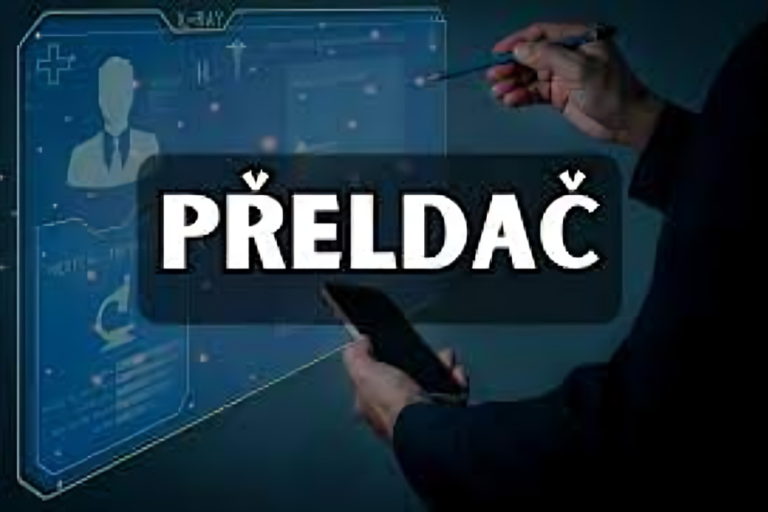Crossword Clue Spotlight: Demystifying “Arousing Suspicion Nyt”
Crossword puzzles have long been a staple of many people’s daily routines, offering a unique blend of mental exercise and leisurely entertainment. Among the various clues and answers that puzzle enthusiasts encounter, some stand out for their complexity and intrigue. One such example is the clue “Arousing Suspicion Nyt.” This guide will explore the intricacies of the New York Times (NYT) Crossword and decode the clue “Arousing Suspicion Nyt.”
Knowing the NYT Crossword
The New York Times Crossword is one of the most renowned and widely solved puzzles globally. First published in 1942, it has a rich history and has evolved over the decades to become a cultural phenomenon.
The NYT Crossword’s Allure
The NYT Crossword is known for its varying levels of difficulty, with Monday puzzles being the easiest and Saturday puzzles the hardest. The allure of the NYT Crossword lies in its clever clues, diverse vocabulary, and the sense of accomplishment it offers solvers. Each puzzle is meticulously crafted to provide a balanced mix of challenge and enjoyment, appealing to both novice solvers and seasoned veterans.
The Use of Hints in Crossword Puzzles
Clues are the heart and soul of crossword puzzles. They guide solvers toward the correct answers through wordplay, definitions, and sometimes misleading hints. A well-crafted clue can be a work of art, combining linguistic creativity with intellectual challenge. The clue “Arousing Suspicion Nyt” is a prime example of this craftsmanship. It requires the solver to think critically and consider multiple interpretations before arriving at the correct answer.
Decoding “Arousing Suspicion Nyt”
When encountering the clue “Arousing Suspicion Nyt,” solvers must consider the context, the length of the answer, and intersecting words within the grid. Here are some potential answers and their implications:
- LEERY
- Definition: Suspicious or wary.
- Context: This word perfectly encapsulates the sense of Arousing Suspicion Nyt . It is often used to describe someone cautious or distrustful of something or someone.
- SUSPECT
- Definition: To have an idea or impression of the existence, presence, or truth of something without certain proof.
- Context: This word can be used both as a noun and a verb, making it a versatile answer. It directly relates to the act of Arousing Suspicion Nyt
- SKEPTICAL
- Definition: Not easily convinced; having doubts or reservations.
- Context: This word highlights a more analytical approach to suspicion, where the person is doubtful and requires more evidence to be convinced.
- FISHY
- Definition: Arousing feelings of doubt or suspicion.
- Context: This informal term is often used to describe something that seems suspicious or questionable.
- MISTRUST
- Definition: Lack of trust or confidence.
- Context: This word directly conveys the sense of Arousing Suspicion Nyt and can be a fitting answer depending on the crossword grid.
How to Write the Ideal Hint
The beauty of crossword clues like “Arousing Suspicion Nyt” lies in their ambiguity. The clue can be interpreted in multiple ways, and the solver must consider the context, length of the answer, and intersecting words to determine the correct solution. This ambiguity adds a layer of complexity that challenges the solver’s critical thinking and problem-solving skills.
The Intricacies of Crossword Puzzle Psychology
Understanding why people are drawn to crossword puzzles can shed light on the popularity of clues like “Arousing Suspicion Nyt.” Crossword puzzles offer numerous psychological benefits, including:
- Mental Stimulation
- Crossword puzzles require solvers to think critically and creatively, stimulating various cognitive functions. Clues like “Arousing Suspicion Nyt” challenge solvers to draw upon their vocabulary, memory, and reasoning skills.
- Stress Relief
- Engaging in a crossword puzzle can be a relaxing and meditative activity. The focus required to solve clues helps distract from daily stresses and provides a sense of accomplishment upon completion.
- Learning and Vocabulary Expansion
- Encountering clues like “Arousing Suspicion Nyt” exposes solvers to new words and their meanings, enhancing language skills.
- Social Interaction
- Discussing potential answers for a clue like “Arousing Suspicion Nyt” can lead to lively debates and collective problem-solving.
The Craft of Making Clues
Creating a crossword clue is an art form. Here’s how a clue like “Arousing Suspicion Nyt” might be crafted:
- Wordplay and Puns
- Constructors often use wordplay and puns to add layers of meaning to clues. This technique challenges solvers to think beyond the obvious and consider multiple interpretations.
- Obscure References
- To increase difficulty, constructors might use obscure or less common words as answers. This requires solvers to dig deep into their knowledge base or make educated guesses based on the grid.
- Thematic Elements
- Some puzzles have overarching themes that tie the clues together. In a themed puzzle, “Arousing Suspicion Nyt” might be part of a larger narrative or concept, adding an extra layer of intrigue.
Strategies for Resolving Tough Clues
Encountering a challenging clue like “Arousing Suspicion Nyt” can be daunting. Here are some tips to improve your crossword-solving skills:
- Start with the Easy Clues
- Begin by filling in the answers you know for sure. This will provide a foundation and help with solving the more difficult clues through intersecting letters.
- Consider Multiple Meanings
- Clues can often have multiple interpretations. Think about different ways the clue could be phrased and consider synonyms or related words.
- Take Breaks
- A fresh perspective can make a big difference. Stepping away from the puzzle and returning later can help you see clues in a new light.
- Practice Regularly
- The more you practice, the better you’ll become at recognizing common clue patterns and solving techniques.
The Effect of Crosswords on Culture
Crossword puzzles have a significant cultural impact. They have been featured in movies and books and even inspired dedicated fan communities. Clues like “Arousing Suspicion Nyt” contribute to the rich tapestry of crossword history and continue to challenge and entertain solvers worldwide.
Crossword Groups
Online forums and social media groups provide a space for enthusiasts to discuss puzzles, share tips, and celebrate solving milestones. These communities foster a sense of camaraderie and collective appreciation for the art of crossword puzzles.
Crosswords in the Press
From characters solving puzzles in films to entire novels centered around crossword themes, these puzzles are a beloved aspect of popular culture. They provide a sense of continuity and connection, linking generations of solvers.
Teaching Resources
Teachers and educators incorporate crosswords into their curriculum to make learning engaging and interactive. These puzzles help students develop critical thinking skills, expand their vocabulary, and learn new concepts in a fun and challenging way.
Conclusion
The clue “Arousing Suspicion Nyt” in the NYT Crossword is a perfect example of the intricate and thought-provoking nature of crossword puzzles. It challenges solvers to think critically, expands their vocabulary, and provides a sense of accomplishment upon solving. Whether you’re a seasoned solver or a newcomer, tackling clues like this offers a rewarding and enriching experience. Embrace the challenge and enjoy the journey of decoding these fascinating puzzles.
FAQs:
What is the NYT Crossword?
The New York Times Crossword is one of the most famous and widely solved puzzles globally. It was first published in 1942 and has become a cultural phenomenon, known for its varying levels of difficulty and clever clues.
Why is the NYT Crossword so popular?
The NYT Crossword appeals to many solvers due to its clever clues, diverse vocabulary, and the sense of accomplishment it offers. The puzzles range from easier Monday puzzles to challenging Saturday ones, making them accessible and engaging for beginners and seasoned solvers.
What does the clue “Arousing Suspicion Nyt” mean?
The clue “Arousing Suspicion Nyt” is an example of a clue from the NYT Crossword that requires solvers to think critically and consider multiple interpretations. It aims to lead solvers to answers like “LEERY,” “SUSPECT,” “SKEPTICAL,” “FISHY,” or “MISTRUST.”
How do I decode the clue “Arousing Suspicion Nyt”?
To decode “Arousing Suspicion Nyt,” consider the context, length of the answer, and intersecting words within the grid. Possible answers include LEERY, SUSPECT, SKEPTICAL, FISHY, or MISTRUST, each capturing different nuances of suspicion.
What are some strategies for solving difficult crossword clues?
- Start with the easy clues: Fill in answers you know to help with harder clues through intersecting letters.
- Consider multiple meanings: Think about different ways the clue could be phrased and look for synonyms or related words.
- Take breaks: Stepping away and returning later can provide a fresh perspective.
- Practice regularly: The more you practice, the better you’ll get at recognizing common clue patterns and solving techniques.
What psychological benefits do crossword puzzles offer?
Crossword puzzles offer numerous psychological benefits, including mental stimulation, stress relief, vocabulary expansion, and opportunities for social interaction.
How do crossword puzzles impact culture?
Crossword puzzles have a significant cultural impact. They are featured in media, inspire dedicated fan communities, and are used as educational tools. Clues like “Arousing Suspicion Nyt” add to the rich history and ongoing popularity of crossword puzzles.
How do online communities enhance the crossword puzzle experience?
Online forums and social media groups allow enthusiasts to discuss puzzles, share tips, and celebrate milestones. These communities foster a sense of camaraderie and collective appreciation for crossword puzzles.
Can crossword puzzles be used as educational tools?
Yes, crossword puzzles are often incorporated into educational curriculums. They help students develop critical thinking skills, expand vocabulary, and learn new concepts in an engaging and challenging manner.
Uncover juicy celebrity rumors and entertainment updates on tamasha.blog






